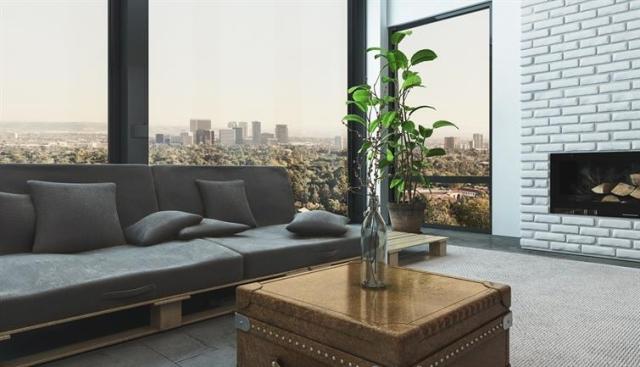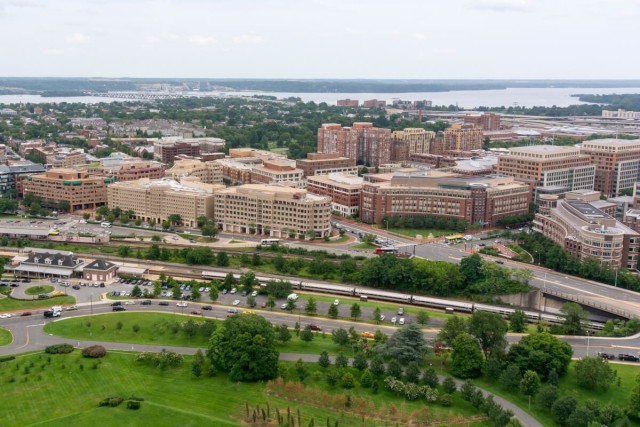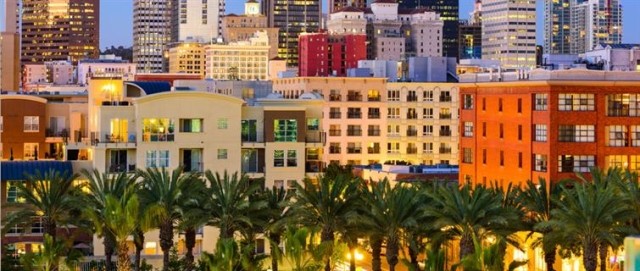A high-rise is a tall building Superman can leap over in a single bound. But how tall is that? Well, it depends on where you live. In the US, anything above seven stories is considered a high-rise. In India, it’s any building with four stories or more. In Germany, any building with more than 12 floors is considered a high-rise. As you search for apartments, typically any building more than 75 feet tall might be called a high-rise.
Of course, if you are searching for a high-rise apartment in Manhattan, it might look different than a high-rise apartment in a smaller city (after all, a seven-story building in New York City might seem rather tiny since the average building in the city has 18 floors). In comparison, a skyscraper has 40 or more floors.
High-rise buildings date back to ancient Rome, when many buildings had more than 10 stories — and over 200 stairs! Hopefully, if you are searching for high-rise apartments, yours will have an elevator.
Are high-rise apartments safe?
You may already know that tall buildings are designed to sway with the wind. But did you know that skyscrapers can move several feet in either direction, just like a tree swaying in the wind? You don’t feel it, though, because of the way the building is constructed. Very tall buildings have a fortified core, often made of concrete (and usually the location of the elevators). They also have a solid foundation that adds more support. This keeps the building stable, so even in the event of an earthquake, the entire building will move along with the earth’s vibration (although, furniture inside your apartment could still shift around).
The taller the building, the more it sways. For example, the tallest skyscraper in the world is the Burj Khalifa in Dubai, UAE at 2,063 feet. It has 163 floors and it sways about six feet. The Willis Tower in Chicago sways up to three feet since it was designed to withstand heavy winds that often come off Lake Michigan.
High-rise Apartment Safety Features to Look For
When looking at high-rise apartments, look for one with a sprinkler system and fire alarms. Look at the exits and stairwell doors to see if they are clearly marked and accessible. These exits shouldn’t be locked or have bars on them. High-rise buildings are more likely to have sprinkler systems than other types of buildings. As with any apartment you look at, your high-rise apartment should have a fire extinguisher and smoke detectors.
If the high-rise apartment has a balcony, make sure it is high enough and has sufficiently spaced railings for safety, especially if you have children or pets. Most high-rise buildings have large windows, but some of these don’t open more than a few inches due to a locking mechanism that is often added to upper-level windows. If you find an apartment with locking mechanisms on the windows but you want to open your windows more than a few inches, ask the property manager or landlord if they would be willing to remove the locking mechanism.
Alternatively, your windows may have guards on them. In some states, such as New York, window guards are required on all upper-level windows if a child under the age of 10 lives in the building, except for windows that lead to fire escapes. This protects children from dangerous falls.
Once you move in, make sure you know where the stairs are located. In the event of a fire, you won’t be able to use the elevator. Find all the exit stairs in your building, just in case the one closest to you is blocked. Talk to your property manager about the building’s safety features and ask about the building’s emergency procedures.
Which floor in an apartment is best?
There are benefits and drawbacks to any floor you choose. Let’s review the pros and cons of each so you can find the floor that’s best for you.
Bottom floor apartments
It’s much easier to move in and out if you choose a ground floor apartment. There’s much to be said about not having to carry your entertainment center up several flights of stairs or trying to book time for the service elevator. Hauling grocery bags into your apartment is easier, as well, since you won’t have to navigate stairs or take a long elevator ride to reach your apartment. If you have a pet, taking the dog out at 5:00 a.m. is much easier.
You might find bottom floor apartments are less expensive overall. This is because they often lack the sweeping views of upper-level apartments, so the rent is cheaper. Ground floor apartments tend to have less expensive heating and cooling bills, as well. All the apartments around you are running their air conditioners/heaters and you may not have to!
You might find noise a drawback to living on the bottom floor. Not just the noise of people above you, but also traffic noise in the city will be more noticeable than if you lived on an upper floor. You could have to deal with pests more often than those on the upper floors. But you may have easy access to outdoor space, or even a patio, which is great for those who like spending time outside.
Here’s a surprising benefit: you’ll gain a few extra minutes in the morning when leaving for work since you can walk right out and not have to wait for the elevator. If many people leave for work at the same time you do, this could result in long lines at the elevators, as well.
Top floor apartments
You want to be on top of the world! Look out at the majestic scenery of the world below! If you are going to live in a high-rise apartment, you might as well strive for the summit, right? The benefits of living on the top floor are less noise since no one lives above you and the traffic is too far away to hear. You also get those grand views, of course.
On the top floor, you might have to pay a little more (those views, after all, come at a price). In addition to the rent possibly being higher, the cost to keep your top-floor apartment cool might cost more, as well. And the elevator ride to the top floor could take some time, especially during those “rush” times in the morning and afternoon. Also, taking your dog out just got much more time-consuming.
Middle floor apartments
Just like Goldilocks, you might find the middle just right: not too high, not too low. If you like to be in the thick of things, the middle floor might be a terrific choice for you. You have the benefits of both the top levels (nice views, less traffic noise) and the bottom level (lower costs, easier access to the outdoors, easier transport of groceries).
If you like the idea of living in a high-rise apartment but you aren’t comfortable with, well, heights, then renting an apartment on a middle floor still provides you with great scenery, and the people below don’t look like ants.
The only drawback to living in the middle is that you really are in the center of it all — meaning you’ll have neighbors above, below, and in most cases, on either side of you.
High-rise vs. Low-rise Apartments
A low-rise apartment building has four or fewer floors, so it’s easier to navigate stairs or elevators. The biggest benefit to low-rise apartment buildings is the multitude of options. There are many more low-rise apartment buildings than there are high-rises. In fact, 43 percent of apartment buildings have fewer than four floors, according to the Census Bureau.
While low-rise buildings can be found in the heart of the city, more exist in the surrounding suburbs. This could mean more green space surrounding the building and an abundance of outdoor amenities to enjoy. Low-rise buildings offer a little more variety, as well, since townhomes, rowhouses, duplexes, and garden apartments are all considered low-rise.
What's the difference between mid-rise and high-rise apartments?
Mid-rise buildings are tall, but not too tall. They typically have between five and 12 floors. Mid-rise apartment buildings tend to have elevators in addition to stairs, unlike many low-rise buildings. If you think you are seeing more mid-rise apartment buildings popping up, you aren’t wrong. Mid-rise buildings are more economical for developers because they cost less than high-rises and have more units available than low-rise apartments.
As a result, mid-rise apartment buildings are easy to find in just about any location, whether you prefer the heart of the city or the suburbs. Since they also tend to be more low maintenance than high-rises, they typically feature more amenities as well. Residents are likely to find outdoor spaces, on-site fitness centers, and swimming pools in their mid-rise apartment communities, which increases the overall appeal.
Apartments come in a variety of sizes. Once you choose between a high-rise, mid-rise, or low-rise, head on over to Apartments.com and start searching! You’ll leap toward your dream apartment in a single bound (well, in a few clicks, anyway), and you won’t even need a cape.






